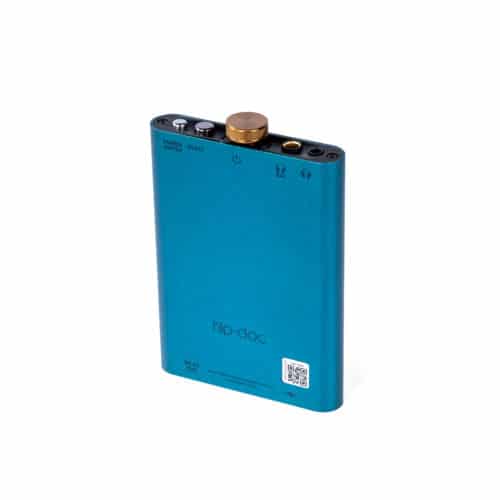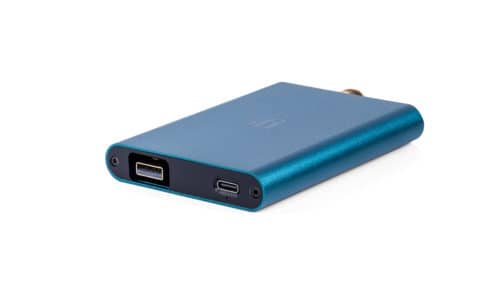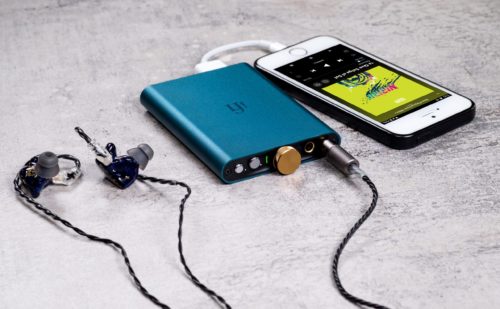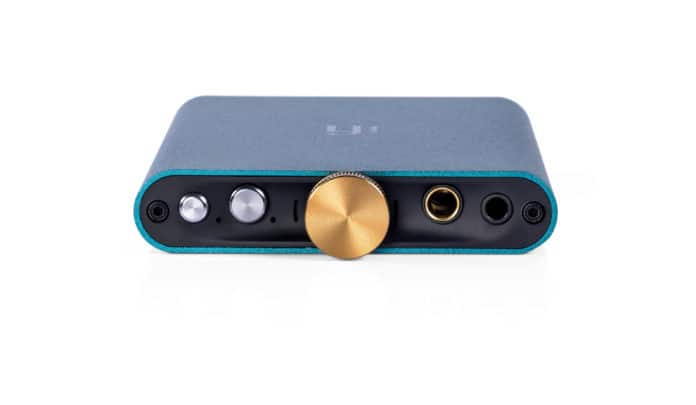iFi is filling a gap in it’s line of DACs. The company has just introduced the super compact and highly affordable hip-dac. In fact, it’s the cheapest DAC/amp in their line-up. It looks very similar in size and shape to the famous FiiO Q1. But with better features.
iFi Announces hip-dac: And yes, it supports MQA
iFi is targeting consumers who are looking to upgrade their sound on the go by bypassing the DAC on their phones and playing through a better performing dedicated DAC and amp. What does the hip-dac offer?

DAC and Supported Hi-Res Formats
iFi has based its DAC around a Burr-Brown DAC chip that iFi uses extensively in its products. It’s known for its fluid, highly ‘musical’ sound quality. It supports all formats, including, bit-perfect PCM, native DSD and MQA – the hi-res streaming codec, as used by Tidal’s ‘Masters’ tier. Hi-res PCM and DXD audio data is supported at sampling rates up to 384kHz, alongside DSD from 2.8MHz to 12.4MHz (DSD64, 128 and 256).
Format Indicator
On either side of the rotary volume control resides a pair of LEDs that change
colour to indicate the format and sampling rate of the digital audio being played.
Balanced Output
In addition to the standard 3.5mm headphone jack, the hip-dac also sports a 4.4.mm balanced output.

Firmware and Filters
iFi’s continuous software development allows features to be added or optimised via firmware updates, enabling the hip-dac to be tailored to the user’s playback priorities and ensuring it stays cutting-edge over time. Users can even download and install different versions of iFi firmware to experiment with different digital filters if they wish.
Power
The headphone amp has a nominal power rating of 400mW, and its capable of delivering over 700mW from the balanced output depending on the impedance of the attached headphones.
Switchable Gain
The amp stage features switchable gain, which iFi terms PowerMatch. This matches the level of drive to the load presented by the headphones, by adjusting input sensitivity and thereby signal strength.
Bass Boost
XBass is another user-selectable feature – a sophisticated form of ‘bass boost’ that enhances low frequencies without muddying the midrange, particularly useful with earphones and open-back headphones that may lack deep bass. It operates entirely in the analogue domain rather than messing with the digital signal via DSP and may be switched in or out of the signal path.
USB Connectivity
There are two USB ports – Type A for audio data and USB-C for charging. The Type A input features a ‘male’ connector, rather than a typical ‘female’ port. This arrangement provides greater mechanical integrity than the USB/Micro USB ports commonly found on DAC/headphone amps from other manufacturers. It also offers an advantage to iPhone and iPad users, because it accepts Apple’s Lightning to USB Camera Adaptor directly without requiring an additional female-to-male USB adaptor. (The Camera Adapter is required to connect Apple iOS devices to third-party USB devices.)

The iFi hip-dac retails at $149. You can pre-order the hip-dac here:

Compare the ranking of various headphones, earbuds and in-ear monitors using our tools.
Discuss this, and much more, over on our forum.
---MAJORHIFI may receive commissions from retail offers.















